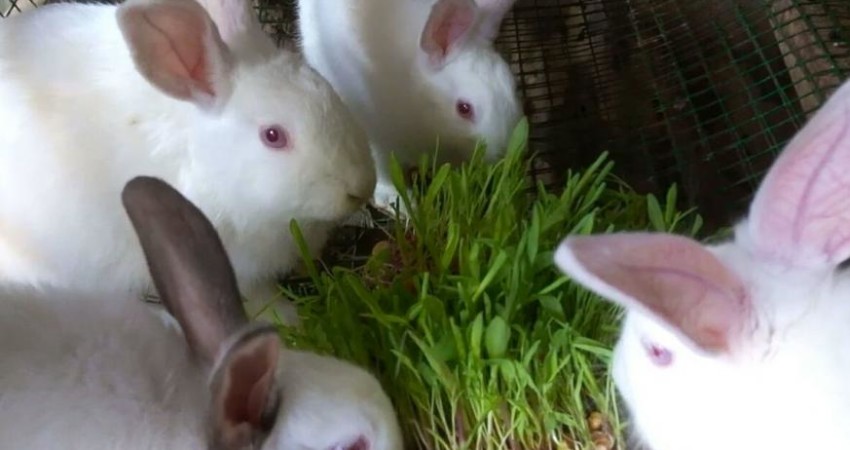

Raising rabbits for meat and fur is a good way to make money but only if you do it on a large scale, and it should be done as supplementary income only. The initial costs in setting-up is small, rabbits breed quickly and frequently, they have large litters and grow to a good marketable size in a very short time. However, it is a full time job with daily rabbit care and good feeding needed.
Determining a Market
Like any business, if you are wanting to make a profit with rabbits you really need to assess the market. Do your homework first, before making an investment to see if there is a market and where the market is. Is there a market for rabbit meat, rabbit fur or both
Once you have established whether there is a market or not, find out where you will be able to slaughter the animals. Some slaughter houses will expect you to transport the live animals to them. And sometimes you can find a local butcher who will be able to slaughter and dress the rabbits.
Choosing the right Rabbit Breed
Once you have established your rabbit market and have found outlets to sell to, you will need to find the perfect rabbit for your climate. Most rabbits will tolerate cooler weather, but those who live in a more temperate area will be able to be bred 4 times a year if you are keeping NZ Whites. Chinchilla Rex rabbits, kept for fur, usually give birth twice a year.
Although there are more than 60 rabbit breeds and varieties, most of these can be divided into 3 different groups:
- Small Breeds that weigh little than a 2 pounds fully grown, such as the Polish rabbit.
- Medium Breeds that have an average adult weight of about 10 pounds. Rabbits in this category are the New Zealand, California and Palomina.
- Large Breeds that have an average adult weight of 14 pounds.
Good profits really come down to starting with a good breed.
Good Dual-Purpose Rabbit Breeds
One of the most popular rabbits for raising rabbits on a commercial scale is the New Zealand white rabbit, which is not from New Zealand, despite its name, but from America. It has good white fur and a good percentage of flesh to bone. Therefore the New Zealand White is a good dual-purpose rabbit. Other good dual-purpose rabbits are the American Chinchilla and the Californian Rabbit.
For those raising rabbits for their fur then the Angora Rabbit and the Rex Rabbits are breeds that are best suited for this purpose and fetch good prices, especially the Chinchilla Rex and other Rex breeds like the Castor Rex and the White Rex Rabbits.
One thing to remember though is that where the turn around time for meat rabbits is about 2 months, fur rabbits are kept for 3-5 months before being slaughtered.
Look for Good Rabbit Breeding Stock
Your New Zealand white rabbit should have a low set body, deep shoulders, and short neck, legs and ears.
Your rabbits will continue to make money for you as long as you maintain good breeding stock
Therefore, not all your rabbits will be sent to the slaughter house. Your breeders will soon need replacing and your litters should be examined for breeding potential. These then should be kept back and used as breeding stock when you need to replace or increase your stock.
A good New Zealand white doe can be bred at the age of 6 months and if conditions are ideal she can be bred 4 times a year. Breeding does are usually kept for 2 years before they are slaughtered. On average they can give birth to 80 young a year. The buck may be bred up to 7 times a week effectively. He can be used for mating at the age of 7 months.
The young are born within 28–31 days of mating and a normal rabbit litter is around 6-8 kittens but can range from two to twelve. The rabbits should be kept until they weigh about 1.8-2 kg each before sent to be butchered. This normally takes about 2 months. However, one should also be aware that by the time the rabbit is butchered and dressed it will have lost about 33% of its original weight. The bigger the breed, the more loss there will be, sometimes as much as 45%. Therefore a 3 kg rabbit before being butchered will weigh about 2 kg after being butchered.
 Contact Jaguza Support
Contact Jaguza Support